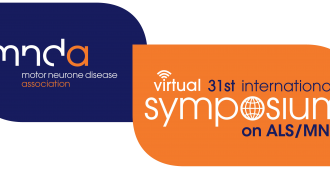One human neural stem cell line that has cleared the US Government’s regulatory hurdles is that developed by the biotechnology company Neuralstem. To date, nine patients have received implants of these cells with few complications reported. Two of the clinicians leading the study at Emory University, neurologist Jonathan Glass and neurosurgeon Nick Boulis, outlined the system that has been developed to ensure extremely accurate implantation into the spinal cord. Both clinicians stressed the importance of safety – the spinal surgery procedure was constantly tested, evaluated and refined, along with the creation of clear ‘stopping criteria’ during the three-hour period of surgery. In this trial, the central tenet of the hippocratic oath – primum non nocere (first, do no harm) – is taken very seriously indeed.
Daniel Offen, a representative from the Israeli company, Brainstorm, presented the strategy for their planned clinical studies using patients’ own stem cells from bone marrow (so called ‘mesenchymal’ stem cells), which have been modified to become more-‘astrocyte-like’ and have also been demonstrated to secrete neurotrophic factors.
These cells will be administered by intrathecal or intramuscular injection. It is important to reiterate that the above preclinical and clinical studies mentioned above are not trying to create new motor neurones to ‘re-wire’ the nervous system. Instead, the aim is to provide the surviving motor neurones with a supportive environment to try and fight off whatever is causing them to become damaged. It is also important to stress that the primary outcome of these early studies is to ensure the implants are safe.
Of course, implantation of mesenchymal stem cells have been tested before – albeit, not in the modified form that Brainstorm has developed. Dr Letizia Mazzini from University of Novara Italy has experience of performing such studies and has published her research in medial journals over the past few years. There have been no serious adverse events in the short or long-term related to the technique. Unfortunately, there was no strong evidence of any beneficial effect and it is not clear whether the cells actually survived long-term, once implanted.
By 7pm, the presentations for Day 1 drew to a close, but a few glasses of wine in the next room ensured continued discussion. My brain was suffering from information overload…
And we still had another day to go…..


